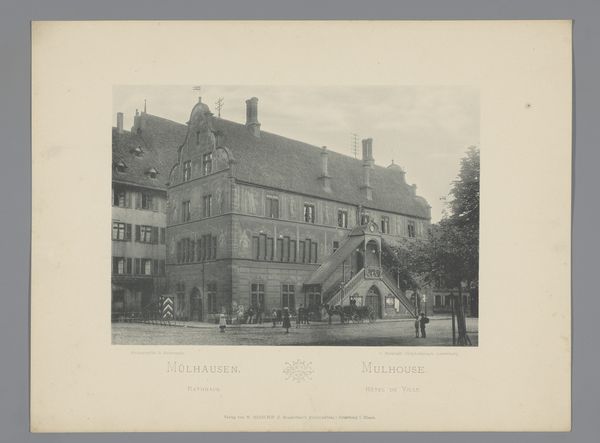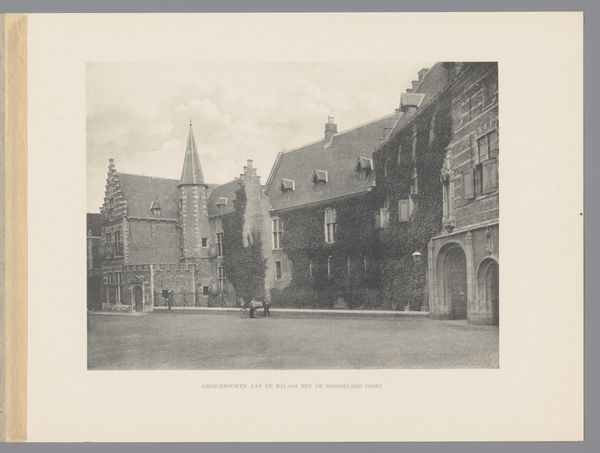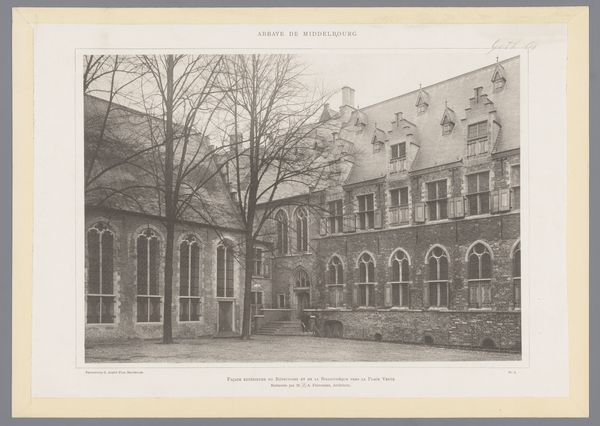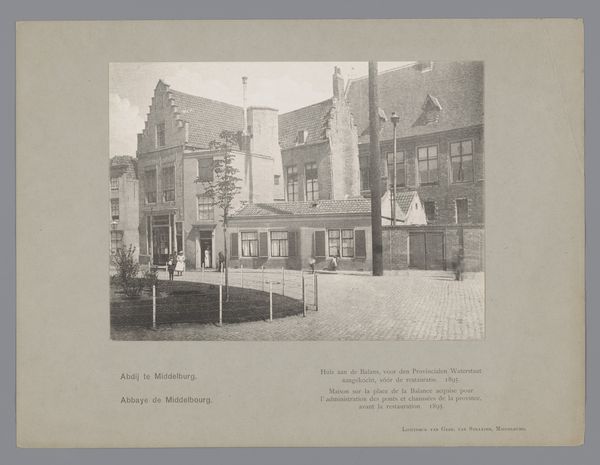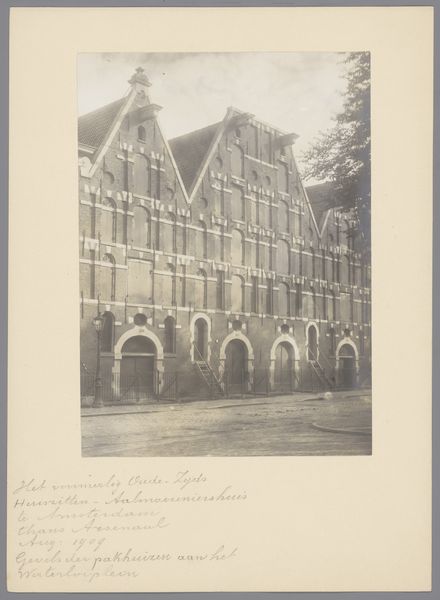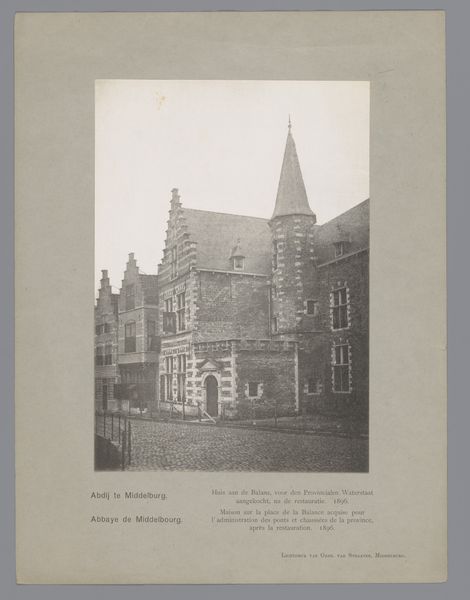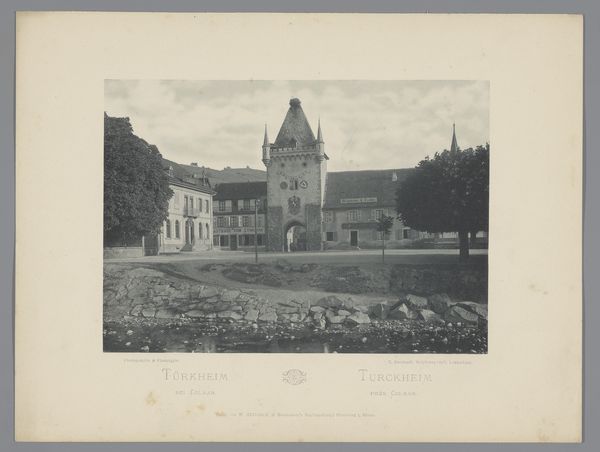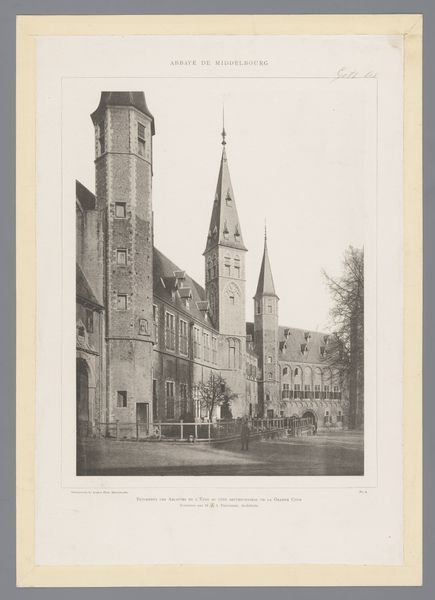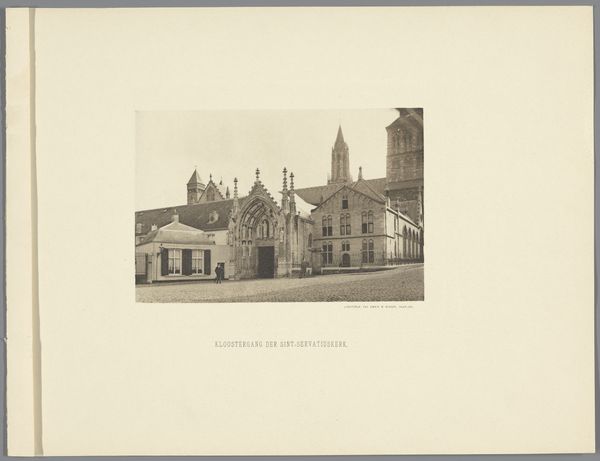
Gezicht op de Rijksarchiefgebouwen in de Abdij te Middelburg after 1900
0:00
0:00
print, photography, site-specific
# print
#
photography
#
site-specific
#
cityscape
#
realism
Dimensions: height 150 mm, width 186 mm
Copyright: Rijks Museum: Open Domain
Curator: This albumen print, believed to be created after 1900 by the Gebroeders van Straaten, captures the Rijksarchiefgebouwen in the Abdij te Middelburg. Editor: My immediate impression is one of faded grandeur. The monochrome tones lend it a sense of historical distance, and that heavy architecture seems burdened by time. It almost feels melancholic, doesn't it? Curator: Precisely. The Rijksarchief, housing the state archives, is a repository of history itself. Consider how the site becomes both subject and object, where architecture testifies to societal structures and evolving administrative practices. The building symbolizes institutional memory. Editor: Which makes its depiction incredibly potent. We aren’t just seeing a building; we're seeing the visible manifestation of power structures. What choices did the photographer make? I wonder if they were conscious of emphasizing that somber atmosphere to evoke certain emotions or associations with the state. Curator: I think that photography, particularly site-specific works, play a crucial role in shaping our understanding and relationship with spaces. Notice how the artist uses a restrained palette and viewpoint to portray the stoic architecture in meticulous detail? I mean it clearly references the style of realism which was incredibly popular at that time. Editor: Absolutely. And as viewers, we need to recognize how that presentation can construct narratives. Are we meant to feel reverence for this institution, or perhaps even a slight unease about the documents held within? I want to know, whose stories are represented in the archive, and who has the power to shape those stories through access and interpretation? Curator: A fundamental question indeed! Images like this provoke crucial discussions around accessibility, archival power, and how buildings themselves become emblems of socio-political processes. Editor: Looking at the picture again, that architectural weight almost seems to push into the ground, reinforcing those sentiments of historical importance, making this far more than simply an objective photograph. It gives a presence to that architecture which makes its existence, in essence, its argument. Curator: So much of how we understand societal structure is due to how we, as viewers, perceive our civic and historic buildings, wouldn't you agree? Editor: Certainly. The interplay between physical spaces, historical narratives, and the very act of representation underscores the complexities embedded within seemingly straightforward cityscapes.
Comments
No comments
Be the first to comment and join the conversation on the ultimate creative platform.

